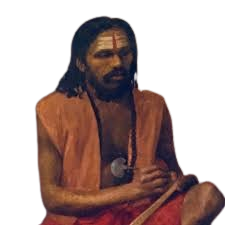Odia: The Ancient Linguistic Treasure of Eastern India
Introduction:
Today, we’re diving into the captivating world of Odia, one of India’s classical languages. Often overshadowed by its more widely known cousins, Odia is a linguistic gem that deserves our attention. So, let’s embark on this journey to explore the rich treasure of Odia language and culture!
Origin and History:
Odia is an Indo-Aryan language that’s part of the larger Indo-European language family. Like many Indian languages, it traces its ancestry back to Sanskrit. But don’t be fooled – Odia has carved out its own unique identity over the centuries. The earliest known inscription in Odia dates back to the 10th century CE, found in the Udayagiri & Khandagiri caves. But the language truly came into its own during the 14th century with the composition of the Odia Mahabharata by Sarala Das, often regarded as the father of Odia literature.

Geographic Spread:
Odisha, formerly known as Orissa, is the heartland of the Odia language. Picture golden beaches, ancient temples, and lush forests – that’s where Odia thrives. But it doesn’t stop at Odisha’s borders. You’ll find Odia speakers in parts of West Bengal, Jharkhand, and even as far as Gujarat, where many Odias have settled.
Speakers and Official Status:
With about 35 million native speakers, Odia might not compete with Hindi or Bengali in numbers, but it’s far from a minor language. In fact, it holds the distinction of being the first language from the Indo-Aryan linguistic group to be declared a Classical Language of India in 2014. Odia is the official language of Odisha and is used in government, education, literature, and media throughout the state.
Script and Writing System:
One of the most fascinating aspects of Odia is its script. The Odia script, derived from the Kalinga script, is a beautiful, rounded alphabet that’s distinct from other Indic scripts. It’s known for its circular shape, which according to legend, developed because early scribes wrote on palm leaves and wanted to avoid splitting them with straight lines.
Unique Linguistic Features:
Now, let’s get into some linguistic nitty-gritty that makes Odia special:
- No Gendered Nouns: Unlike many Indo-European languages, Odia doesn’t assign gender to inanimate objects. This makes it somewhat easier for learners!
- Inclusive and Exclusive ‘We’: Odia distinguishes between ‘we’ that includes the listener and ‘we’ that doesn’t. It’s a nuance that many languages don’t have.
- Honorifics: Odia has a complex system of honorifics, reflecting the importance of respect and social relationships in Odia culture.
Dialects:
Like any language spread across a region, Odia has several dialects. The main ones include Mughalbandi Odia (considered the standard), Baleswari Odia, and Desiya Odia. Each has its own flavor and reflects the diversity within Odisha itself.
Influence and Borrowings:
Odia hasn’t existed in isolation. Over the centuries, it’s been influenced by and has influenced its linguistic neighbors. You’ll find loanwords from Bengali, English, and Persian in modern Odia. But Odia has also left its mark, influencing languages like Ho and Mundari.
Modern Usage and Challenges:
Today, Odia is very much alive and kicking. It’s used in literature, cinema, music, and of course, everyday life in Odisha. The state has a vibrant literary scene, with the Odia film industry, nicknamed “Ollywood,” producing numerous movies each year.
However, Odias are working hard to preserve and promote their language. From digital initiatives to language festivals, efforts are being made to ensure Odia continues to thrive in the 21st century.
Conclusion:
Whether you’re a language learner, a linguistics buff, or just curious about the world’s diverse tongues, Odia is a language that deserves your attention. So the next time you hear someone speaking Odia, remember – you’re listening to a language that’s been telling stories for over a thousand years!
Thanks for joining me on this linguistic adventure.
Until next time, “bidāẏa!” That’s goodbye in Odia!
